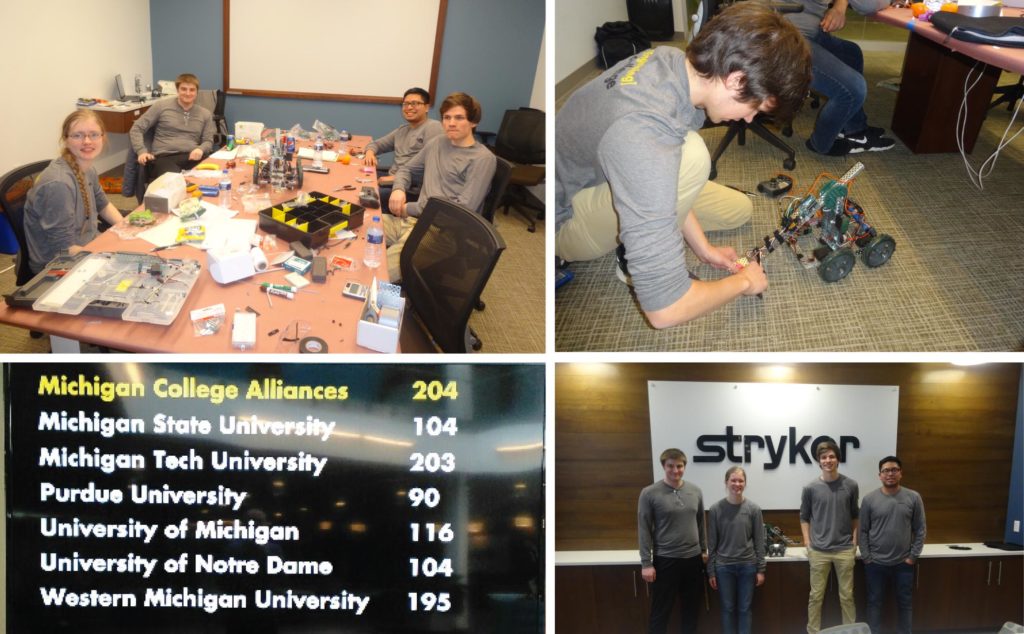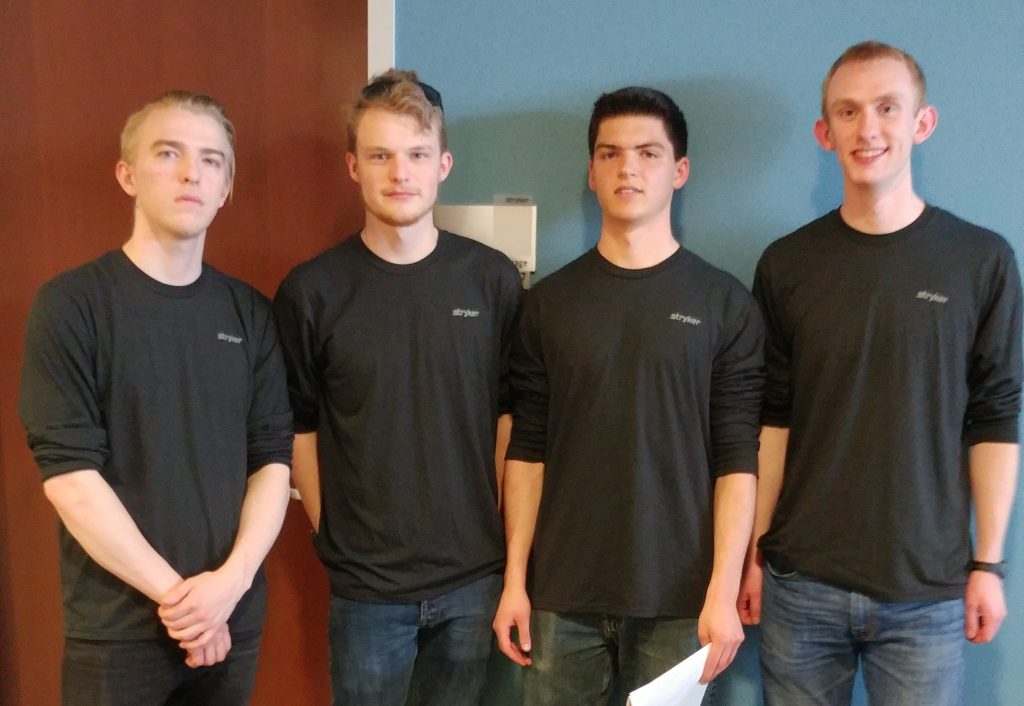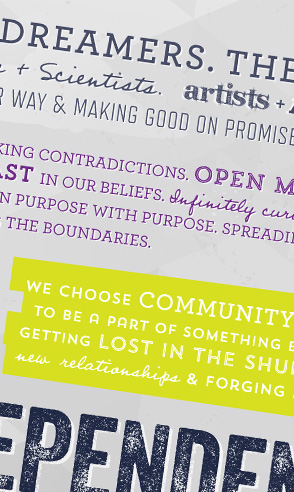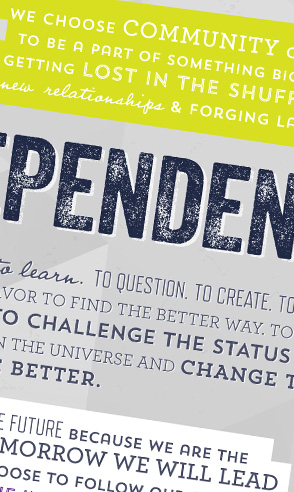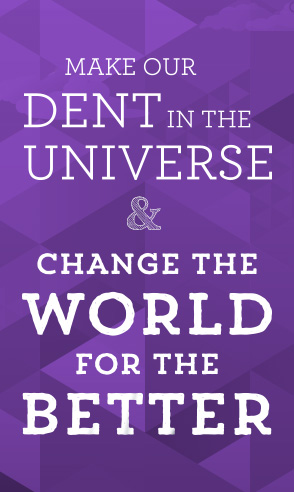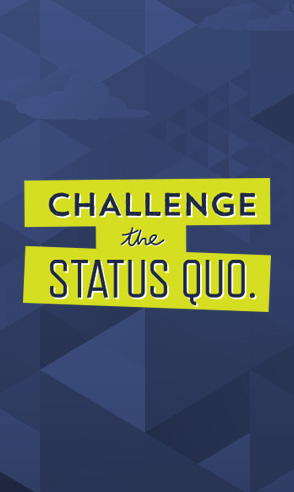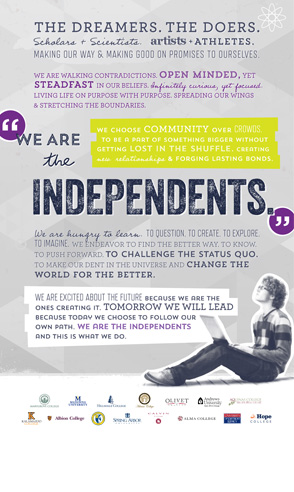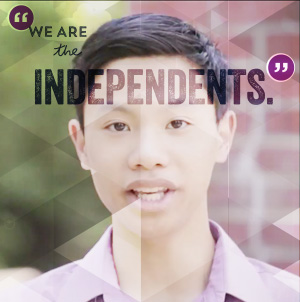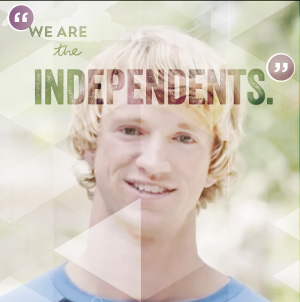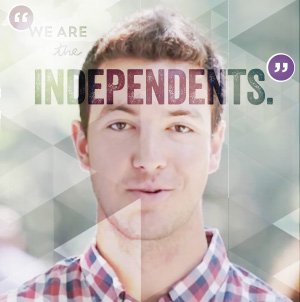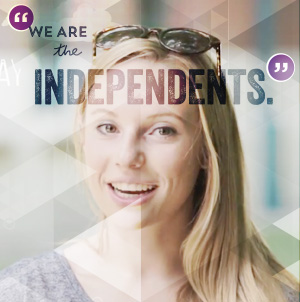Archive for
Make Your College Campus Visits, Virtually
While in-person admissions visits at Michigan’s top 14 private colleges and universities have been canceled due to the coronavirus pandemic, prospective students can still explore these beautiful campuses with the click of a button!
With virtual tours available, you can still get the chance to “walk” the campus, see and feel what life could be like for the next four years. The online tours not only give you a peak into each campus, but many schools even allow you to schedule an online information session with a live admissions counselor! Get your questions answered and make an informed choice now from the comfort of your home.
Get more information in the links below:
Alma College Virtual Tour | Schedule a Virtual Visit
Andrews University Virtual Tour | Sign up for a Virtual Preview
Aquinas College Virtual Tour | Schedule a Virtual Personal Visit
Calvin University Virtual Tour | Schedule a Virtual Visit
Hillsdale College Schedule a Virtual Visit
Hope College Virtual Tour | Schedule a Virtual Visit
Kalamazoo College Virtual Tour | Schedule a Virtual Visit
Madonna University Campus Tour Video | Schedule a Virtual Visit
Siena Heights University Virtual Tour
Spring Arbor University Virtual Tour | Schedule a Virtual Visit
University of Detroit Mercy Virtual Tour | Sign up for a Virtual Information Session
Michigan Colleges Alliance Team Wins 2019 Stryker Engineering Challenge
For the past five years, Michigan Colleges Alliance (MCA) has fielded a team of four students from its member schools with engineering programs to compete in the annual Stryker Engineering Challenge. For the first time this year, the MCA team won against competing teams from Michigan Technological University, University of Michigan, Michigan State University, Western Michigan University, Purdue University, and University of Notre Dame. The winners of the competition received a $1,000 scholarship (each) and an interview opportunity for a 2020 internship.
The Stryker Engineering Challenge is an overnight challenge where teams are given materials and approximately 12 hours to build a robot vehicle designed to navigate the challenge. Each robot is remote-controlled and tested in a 30-minute competition. During the competition, the robots are challenged to pick up Legos and race through an obstacle course. This year marked the ninth annual challenge with teams representing eleven different schools.
This is the fifth year that MCA has fielded a team. In 2015, the MCA team came in second place, and this year they won. The team was comprised of Devin Garcia & Jeremy Barrett of Andrews University, Denise Roorda of Calvin College, and Joshua Cormier of University of Detroit Mercy. The team took first place with 204 points and Michigan Technological University was a close second place with 203 points.
The students from the Michigan Colleges Alliance team had never worked together before the Stryker Challenge as they each attend different schools. Their victory is a testament to the high-caliber MCA schools and students, and their ability to work collaboratively in new situations.
Michigan Colleges Alliance is very appreciative of Professor Gunnar Lovhoiden, professor of engineering at Andrews University, who has served as the faculty mentor each year for this competition. Each year, he has generously donated his time during spring break to take on this role demonstrating an example of the strong student-faculty relationships valued at MCA schools. “The MCA team worked really well together and maximized their performance by making good design decisions,” he says.
Hyun Kwon, chair of the Andrews University Department of Engineering, adds, “I am so proud of our students. They have proven the ability to successfully compete at such a high level and against much larger schools.”
Private Colleges Team Up with Harvard Business School Online to Create Unique Hybrid Learning Program
Michigan Colleges Alliance (MCA) is collaborating with Harvard Business School (HBS) Online to offer students at participating MCA campuses a blended learning program, and an opportunity to earn an HBS Online course credential. In the first phase, nearly 70 students from five MCA member colleges and universities completed the HBS Online’s Sustainable Business Strategy course in the spring.
“When we built this course, one of my hopes was that it could be utilized to educate young people about the important role that business has in tackling some of the challenging issues of our time,” said Harvard Business School Professor Rebecca Henderson . “The students and faculty from the MCA campuses who participated in this pilot are pioneers, and I look forward to seeing how they will apply the learnings from our course in their own communities.”
The participating colleges created a blended learning offering where students registered for the “sustainable business” course led by local faculty and featuring the HBS Online course led by Professor Henderson. Students then applied their learnings through projects with businesses that were facing sustainability challenges, including Wolverine Worldwide, Merrill, Adrian Steel and Thetford Corporation.
“This was by far the most interactive course I have ever taken,” said Mya Oleksiak , a sophomore at Adrian College . “I loved that the modules and field work put me in real-life situations, and the meetings with my professor and classmates tied it all together. It was a privilege to be part of it.”
“This was a huge opportunity to reinforce what I learned as a Sustainable Business major and to take it into the real world,” said Tyson Marsh , a senior at Aquinas College . “The conversations with people in my group, from Bangladesh and Australia , helped me see different ways to apply and approach sustainability, and it is really amazing to be able to help a big global company like Wolverine solve a real sustainability problem.”
“The HBS pilot is a perfect illustration of why MCA has become a national leader in private higher education collaboration,” said MCA President Robert Bartlett . “It embedded content from the most prominent business education brand and a global learning network into existing classes offered by our member campuses. It then connected student classroom experiences to real projects in local communities. This best practice, active pedagogy model has produced tangible outcomes for both students and local businesses throughout the state.”
MCA plans to extend the program with another Sustainable Business Strategy offering in the spring and other HBS Online courses in the future. MCA represents 14 of the top independent colleges and universities in Michigan. Participating colleges included Adrian College, Albion College, Andrews University, Aquinas College, and Spring Arbor University.
When is the best time to visit colleges?
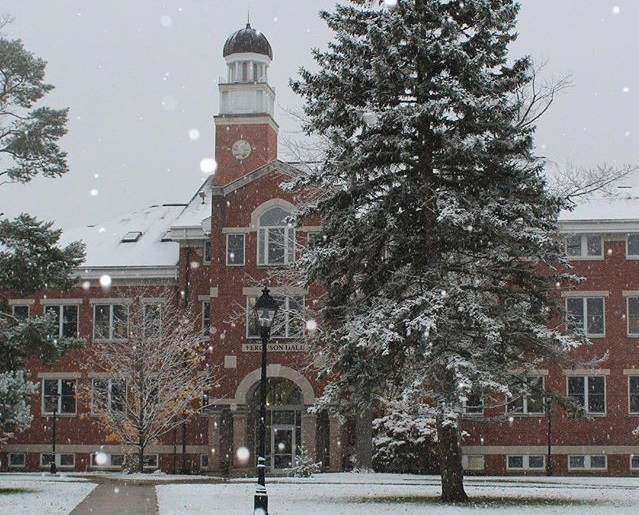
(Albion College, voted 12th Most Beautiful College in Winter)
It’s winter, and the tundra is setting in – at least it is here in Michigan. The last thing you are thinking about is planning a trip to visit campuses. Those long walks across snow-covered quads are certainly less appealing when the temperatures are teetering at the same level as the number of layers you’ll be wearing to stay warm. Or maybe you are a freshman or sophomore, and it’s just “not time yet.”
So, “When is the best time to visit?” The answer may not be what you expect. Here are some tips for getting the most out of campus visits:
Time of year:
As summer strolls in and the school year winds down, families across the country are gearing with plans to visit college campuses. Tours are crowded, staff is minimal, and quads are relatively barren. Although the summer months are more convenient for your time, ideally you should try to plan your visits when classes are in session and the campuses are full of life. Think of it like trying on a pair of new shoes: do you get the proper assessment while sitting? No, you get up, walk around, and perhaps jog in them… as it should also be done visiting campuses. Simulate the day-to-day as if you are attending the school. It doesn’t necessarily mean go in the dead of winter, but consider this: it may be cold, but it’ll also be cold while you attend, won’t it?
Age of student:
It can be very rewarding to visit colleges and universities before your junior and senior year (read: before it’s decision time). You are less concerned about choosing and “buying” when you are simply “window shopping” and more interested in checking out the inventory. Expose yourself to as many different kinds of places—big schools, small schools, research universities, liberal arts colleges, urban campuses, places way out in the country—to develop a broad perspective of all the different options. Then, when it is time to make a decision, you’ll have a better foundation on which to choose.
Before stepping foot on the first campus (and each one after that…):
Your new mantra: Relax, enjoy, decide later. Resist the impulse to judge immediately, good or bad. Your first reaction is bound to be emotional, and usually overly positive—college is really cool! Sleep on it. Weigh your impressions against the other schools you visit and try to remain as objective as possible so your rose-colored glasses don’t allow you to overlook things.
How to choose:
As you visit the campuses, allow your senses to guide you. Really like something? Take note of it. Feel like something’s missing? Take note of it. Gut instinct is usually pretty accurate. Additionally, the perceptions from your visits will come in handy when completing your college applications. Remember this: tying personal experience to the campus environment will blow the minds of the admissions department!
What to look for:
Focus on fit. We perform at our best when we have a level of comfort, belonging, and value. Questions to ask yourself: How does the college meet my academic needs? Will I be challenged appropriately? Is the style of instruction a good match for how I learn? Does the college offer a community that makes me feel “at home?” Does the college offer extracurricular activities that interest me?
After the visit, before you leave:
Connect with the recruiter. Colleges and universities typically assign admissions personnel to different areas of the country for recruiting efficiency. If your area’s recruiter is available, definitely introduce yourself. Either way, get that person’s contact information. Consider him/her as your “go to” person when you have important questions later in the admissions process. And remember this: there is nothing insignificant nor too embarrassing to ask. The admissions staff is there to help!
What to do next:
Record your visit. Make notes as soon as you are able. The more campuses you visit, the more they will begin to blend together, especially from memory. Take pictures to give yourself a visual index of what you’ve seen to avoid confusion later.
And finally:
Enjoy the process. It can be easy to get lost in the excitement and have that energy turn into anxiety. Relax. Start the search early. Visit during the school year to witness the campus’s true environment. Trust your senses and take notes.
As you map your college visit road trip, include a few of Michigan’s top 14 private colleges and universities on your list. These schools are purposefully smaller and emphasize “community over crowds.” Often comparable in cost to Michigan’s public institutions, the independents boast higher four-year graduation rates, outstanding faculty who help students forge their own paths, and smaller class sizes for a truly unique and personal experience.
Be bold. Be different. Go independent.
Michigan Colleges Alliance takes Second in Stryker Engineering Challenge.
Michigan Colleges Alliance (MCA) and its team of four engineering students finished second out of seven teams in the most recent Stryker Engineering Challenge. MCA competed against six teams from University of Notre Dame, Michigan Tech University, Western Michigan University, Miami University of Ohio, and Purdue University. Michigan Colleges Alliances beat out everyone, except for Michigan Tech University, who took first place in the competition.
Their team was a collective team of engineering students from two of their 14 schools, Andrews University and Calvin College. Levi Vande Kamp from Calvin College and Eric Anderson, Darrick Horton, and Justin Wiley from Andrews University made up the MCA team.
Gunnar Lovhoiden, a professor of engineering at Andrews University, supported the MCA team at the competition.
“I think our team worked really well together. Their design worked well and they represented MCA with honor. Second place—how about that,” says Lovhoiden.
This is the 8th year of the Stryker Engineering Challenge. The competition this year was held on March 22nd and 23rd.
Left to right: Darrick Horton (Andrews), Eric Anderson (Andrews), Justin Wiley (Andrews), Levi Vande Kamp (Calvin). (Photo by Gunnar Lovhoiden, professor of engineering)
Andrews University Wins Acclaim for Prison Bible

Sometimes, faith leads you off the beaten path.
Such is the case with Andrews University and a group of ministry activists, who have teamed to produce beautiful, leather-bound Bibles designed for prisoners.
Known as the prison ministries of the Andrews Study Bible, the book is designed to be a keepsake for inmates and spread the good news, while accommodating their special needs.
It’s cheaper than traditional, high-quality Bibles — $20 compared to $100 — but still impressive enough to become treasured behind bars. Bonded with leather and immaculately produced, the Bibles are themselves are a work of art.
“We believe these Bibles tell the inmate they have value, which matters a lot, as they are mostly shunned by society and forgotten by their families,” Judy Mackie, who runs a nonprofit, Binding Broken Hearts, told the Adventist Review.
“We get letter after letter expressing their joy and thankfulness that someone cares.”
The partnership began after officials at Andrews University Press — the publishing arm of Andrews University — began noticing Mackie buying their regular, highly acclaimed Bibles in bulk at retail prices, $70-$99 apiece.
After Andrews officials reached out to her, the idea took root for a less-expensive but still comprehensive edition of the Andrews Study Bible, which debuted in 2010 and has quickly become one of the most coveted editions of the good book.
An initial printing of 5,000 copies of the prison volume in 2014 sold out quickly. Ditto for last year’s run of 5,000. And ditto again for the 2016 pressing.
“If you could just see the faces of some of the inmates who have received the Andrews Study Bibles, your heart would melt,” said Dan Preas, a prison ministry leader in Washington.
Doing good work is a mission for Andrews University, the flagship school of the Seventh-day Adventist Church. Like the Michigan’s top 15 independent colleges and universities, the schools stress community over conformity.
Class sizes are small, allowing students to work closely with professors committed to helping them forge their own path.
It’s an experience that simply isn’t available at traditional universities. And despite what you may have heard, independents are often less expensive and boast higher four-year graduation rates than four-year institutions.
Be bold. Be different. Go independent.
Kalamazoo Promise Makes Private Education Within Reach
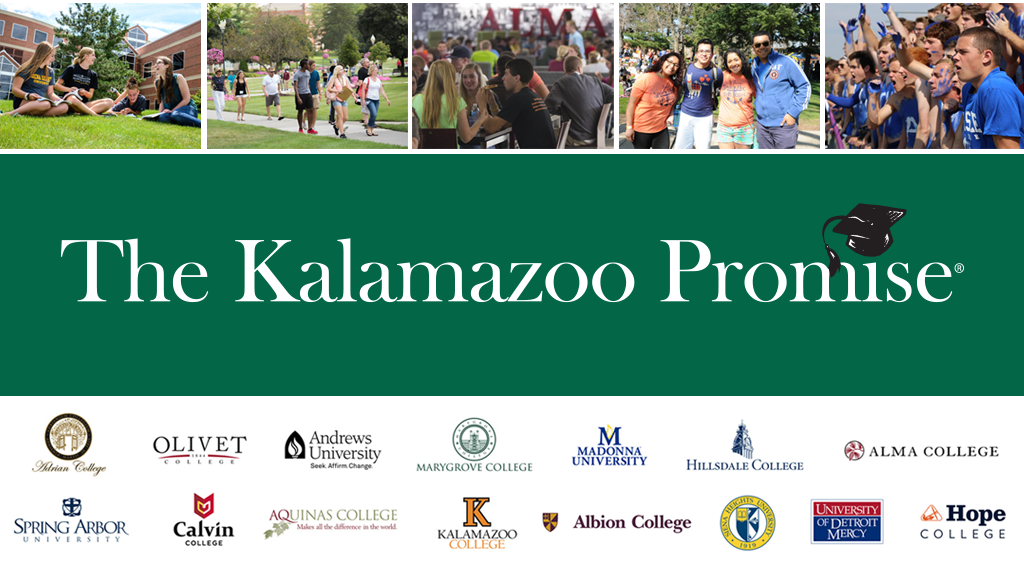
Almost everyone nowadays can cite scary statistics when it comes to the cost of college education.
Nationwide, the average annual tuition at private schools has more than tripled in 30 years jumping to $32,405 this year, according to inflation-adjusted statistics from the College Board.
But the cost of an elite private school education is nothing for students in Kalamazoo public schools.
You read that right.
The cost of Michigan’s 15 independent colleges and universities is zero for students who graduated from Kalamazoo Public Schools and attended since kindergarten. Graduates who attended since at least seventh grade will receive 75 percent of their tuition.
The Kalamazoo Promise is a revolutionary program that is changing lives and putting college in reach for 5,000 eligible graduates since it was launched and funded by anonymous donors in 2005.
The schools now send 85 percent of students to college, whose graduates can expect to earn $1 million more over their lifetime than peers whose education stopped at high school.
And what an education they can get, especially at Michigan’s independents: Adrian College, Albion College, Alma College, Aquinas College, Calvin College, Hillsdale College, Hope College, Kalamazoo College, Marygrove College, Olivet College, the University of Detroit Mercy, Andrews University, Madonna University, Siena Heights University and Spring Arbor University.
The schools pride themselves on helping students forge their own path. Classes are taught by professors, not teaching assistants, with average class sizes of just 17.5 students.
The independents open doors to a host of careers, from business and engineering to education and nursing, supported by a nurturing network of alumni who have become leaders in their fields.
And the independent colleges look like the world around them. One in 4 students at Michigan private colleges and universities is African American, American Indian, Asian, Hispanic or Latino.
Be bold. Be different. Go independent.
Alt Spring Break Stories – Cuba
We’re always inspired to learn about the exciting and impactful projects the students from Michigan’s top 15 private colleges and universities accomplish on their Alternative Spring Breaks.
Spring Break can be a time to kick back or a time to step up. The fine students from Andrews University chose to do both on their study tour of Cuba. They captured the highlights in this video.
Shot at Sit-Up World Record Brings Together Andrews University
There really is a world record for everything.
Largest biceps? Yep. Some guy from Egypt has 25-inch muscles.
The tallest dog? Everyone knows that’s Zeus, a Great Dane from Otsego, Michigan.
The most people doing sit-ups continuously? Alas, it’s still Hathershaw College in Manchester, England, despite last month’s valiant effort by Andrews University in Michigan.
On a cold January day, 520 hearty souls gathered in the university’s Johnson Gymnasium for their shot at immortality. They needed 504 to correctly do a sit up over the same minute.
That would put them one more than the Brits and enshrine them in the “Guinness Book of World Records.”
The police chief and undersheriff were there to make sure everything was on the up and up. Sanctioned as official witnesses for the famed Irish catalogue of superlatives, they counted heads and made sure everyone had their feet on floor, knees bent, torso and head flat and arms behind their heads or crossed over their chests.
There are protocols, after all. This is serious business.
The first attempt eliminated more than a dozen for bad form. Only 489 lasted 1 minute, 15 seconds.
They tried again. Seven more maintained the pace. That brought them to 496.
It wasn’t enough. They called it a day.
“Everyone tried,” University Health & Wellness Director Dominique Wakefield told the Herald Palladium newspaper.
“The point was to get people out and thinking about fitness.”
It fits right in line with Andrews University’s mission to Live Wholly – a foundational commitment to wellness that nurtures the Body, Mind & Spirit. Simply put, it reflects an understanding that education best succeeds if there is an equal emphasis placed on physical, mental and spiritual development.
Like Kanye West and Kelly Clarkston sang, though, what doesn’t kill you makes you stronger. So Andrews will try again this spring — when the weather is warmer and the fire still burns.
“I hope people walked away feeling good about taking part in a community event,” Wakefield said.
Is it a little silly? Of course. But it was also great fun, raised awareness of fitness — and helped foster a spirit of cohesion and togetherness on a cold winter day.
That spirit of community is vital to Andrews University and Michigan’s top private colleges and universities.
Intentionally different than big state schools, the colleges take pride in the fact that students forge tight bonds with each other and faculty members.
At huge public schools, it’s easy to be just another face in the crowd. At Andrews and the independents, students are part of something bigger, a unique community that shares traditions and special events they’ll remember for a lifetime.
Professors pride themselves on working closely with students to help them forge their own path, buck conventional wisdom and find a new way.
It’s an experience that simply isn’t available at traditional universities. And despite what you may have heard, independents are often less expensive and boast higher four-year graduation rates than four-year institutions.
Be bold. Be different. Go independent.
Andrews University students make tiny homes and a big difference
Tiny houses are all the rage. After years of McMansions, itsy bitsy homes the size of sheds are suddenly in vogue, from the TV show “Tiny House Nation” to a planned community in Cleveland.
Fashion was the furthest thing from the minds of Andrews University students, though, when they constructed homes that could be used to house the needy. Traditionally, students travel to Bolivia to build houses, but this year, charity came closer to home.
“We launched it not really knowing how it was going to turn out, but the students really liked it,” said Carey Carscallen, dean of the School of Architecture, Art & Design, who organized the project involving with five graduate students.
One house — “The Shed” — remained in a warehouse, unfinished. The other, nicknamed “Bay View” is a 148 square-foot marriage of practicality and luxury. It’s small enough to fit on an 18-foot trailer, but big enough to contain two bedrooms, a complete kitchen and bathroom. A website, theshedtinyhouse.com, tracked the progress of the project, which Carscallen hopes to repeat to provide tiny homes with needy residents of nearby Benton Harbor.
The project wasn’t just cool. It made students focus on different skillsets — teamwork, design, planning, maximizing limited resources — that architecture students don’t always get to use anyway. And it made them think differently about what defines a home, Carscallen said.
Thinking differently. That’s what faculties do at Andrews University and Michigan’s top 15 independent colleges and universities.
The schools are guided by passion and community. Class sizes are small enough so students not only know their professors, they form lifetime bonds. Professors pride themselves on working closely with students to help them forge their own path, buck conventional wisdom and find a new way.
It’s an experience that simply isn’t available at traditional universities. And despite what you may have heard, independents are often less expensive and boast higher four-year graduation rates than four-year institutions.
Be bold. Be different. Go independent.


